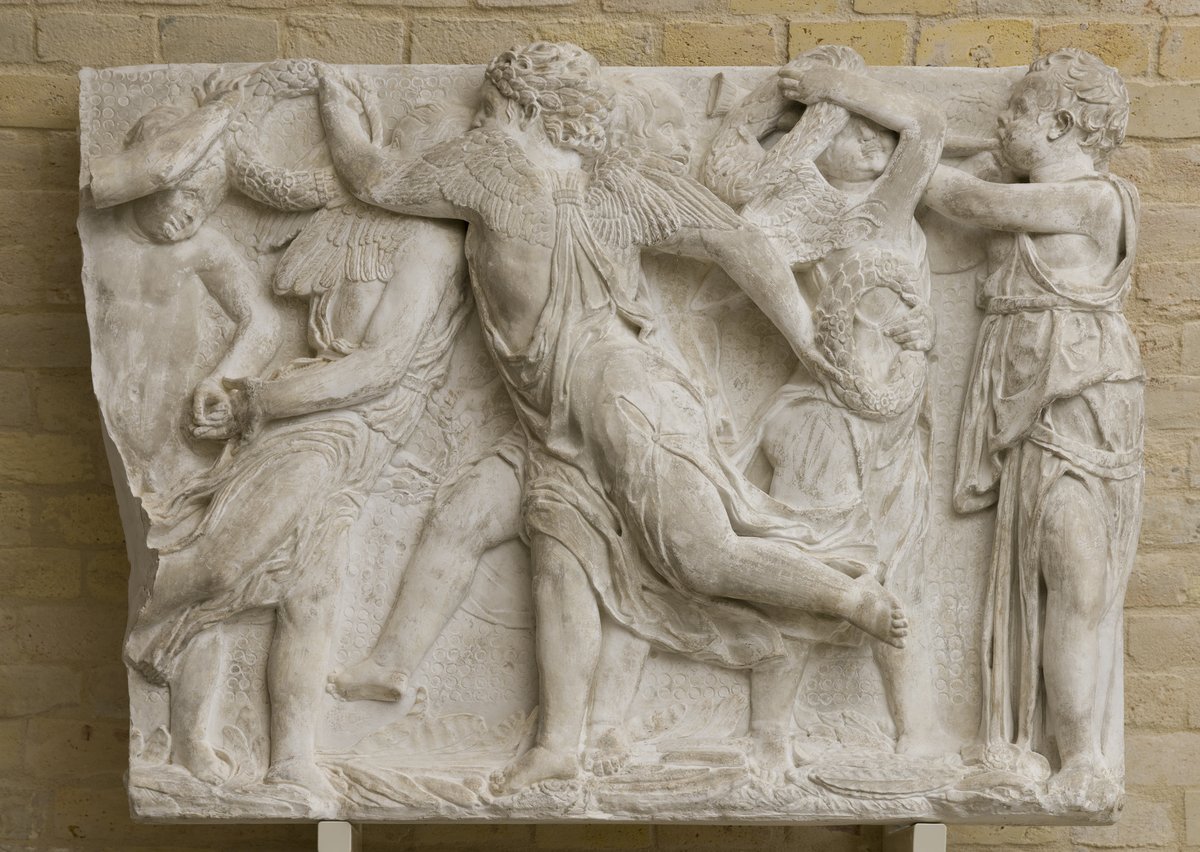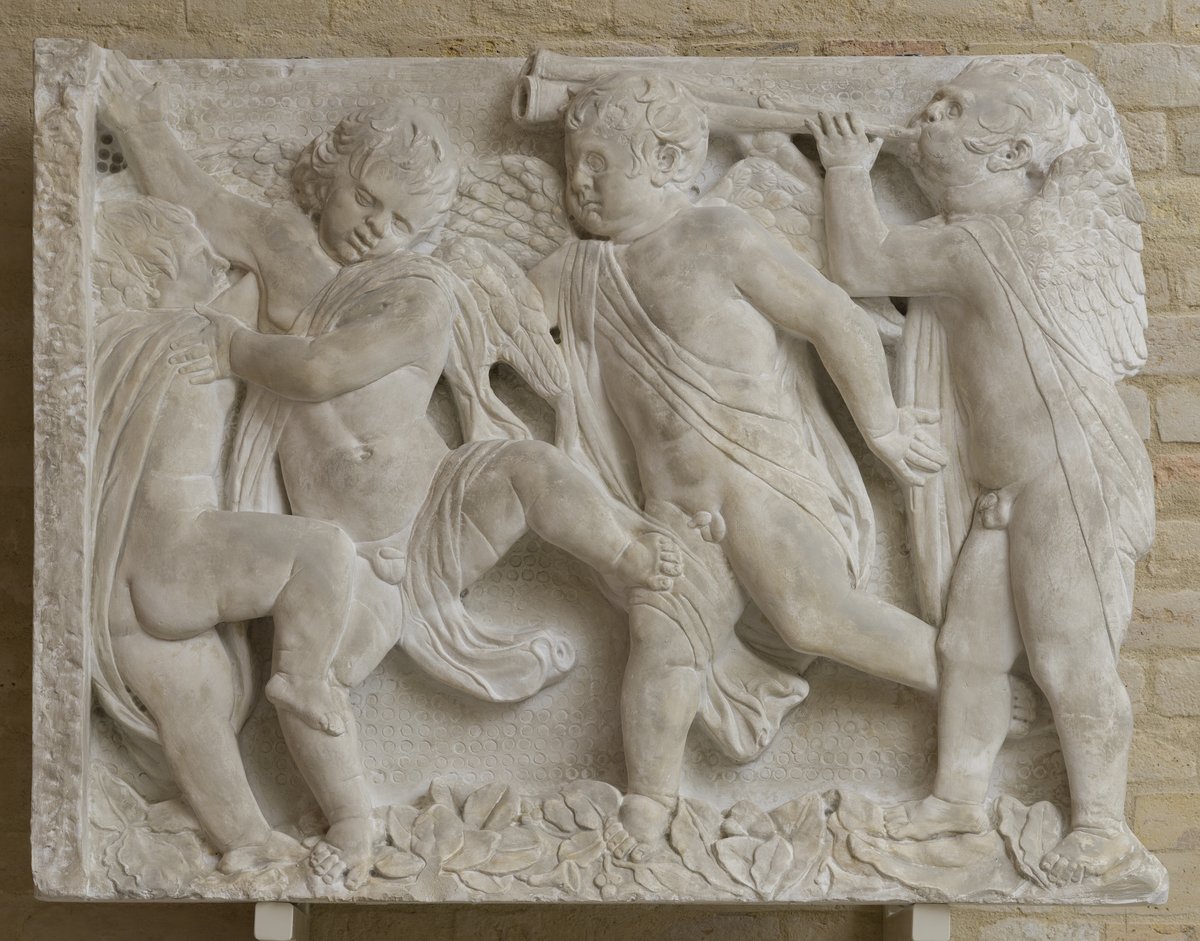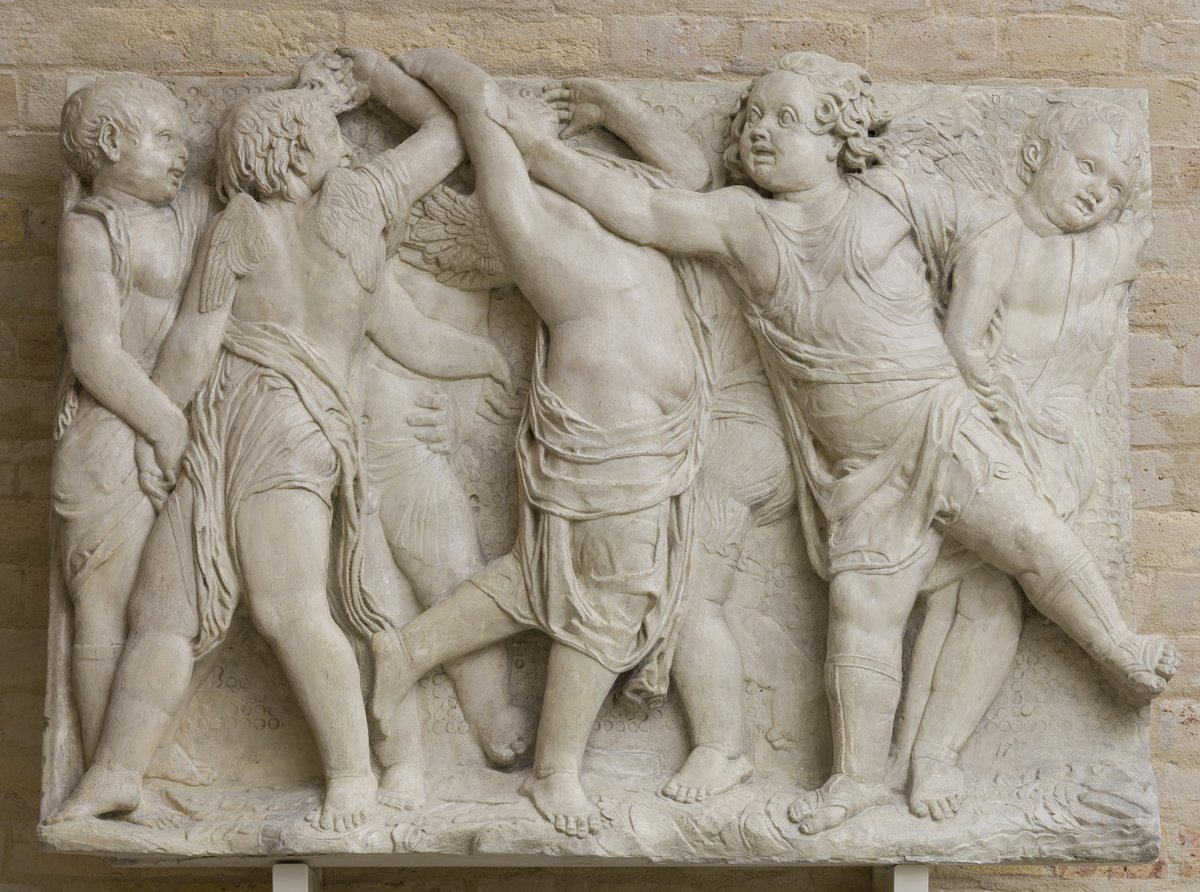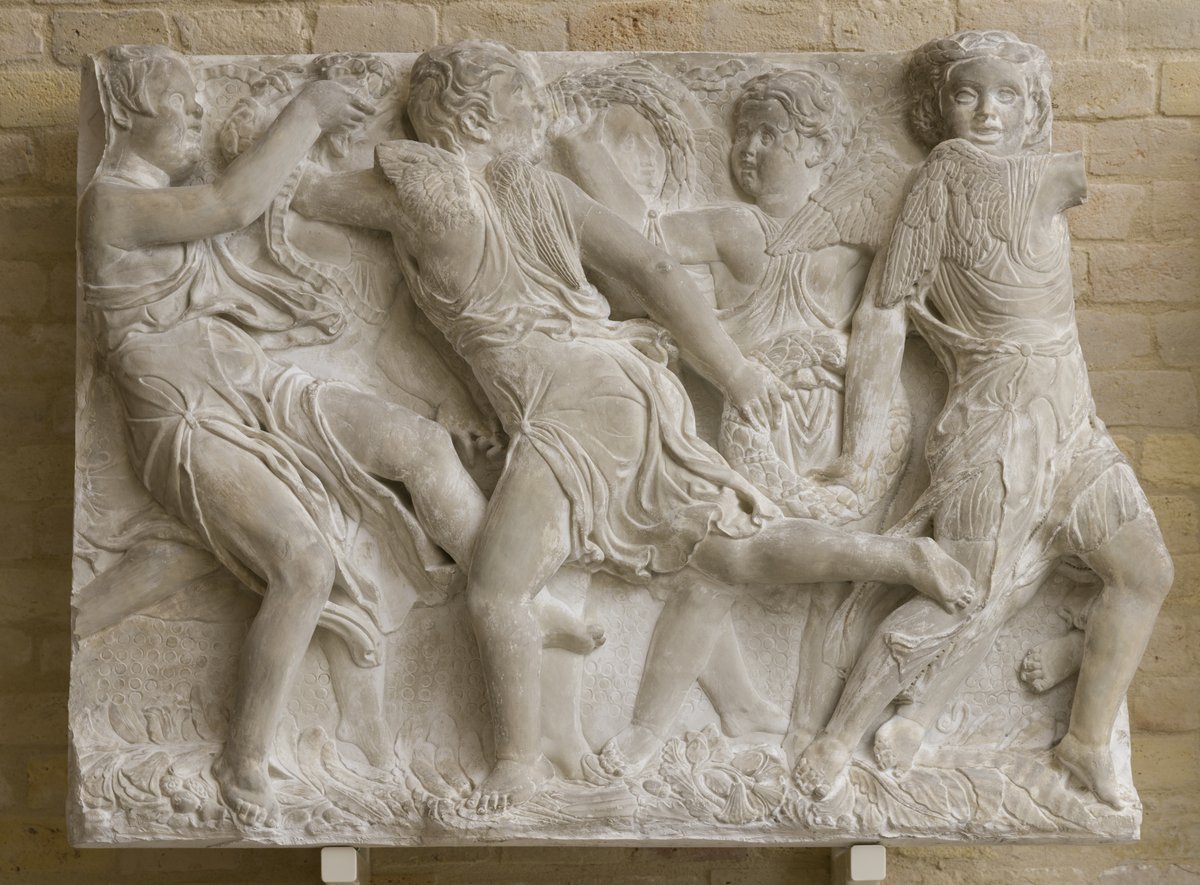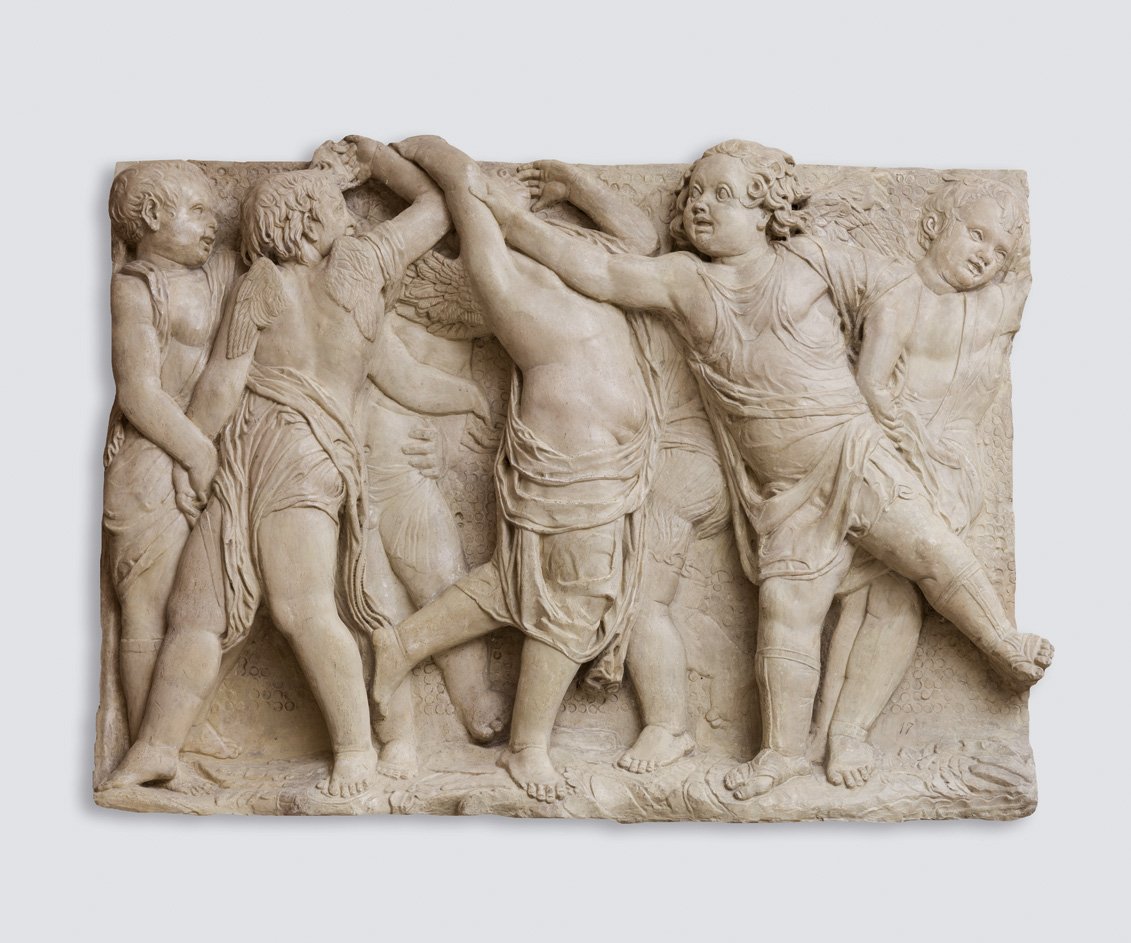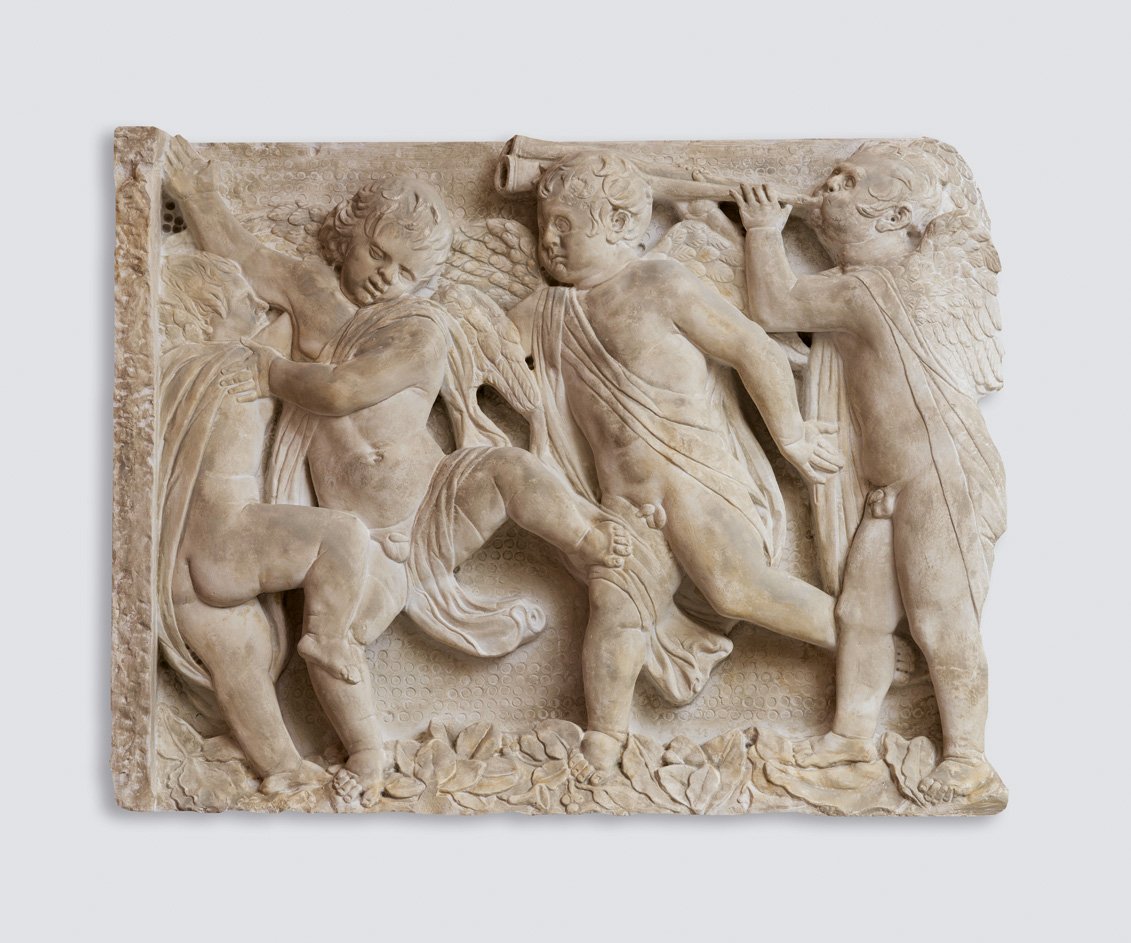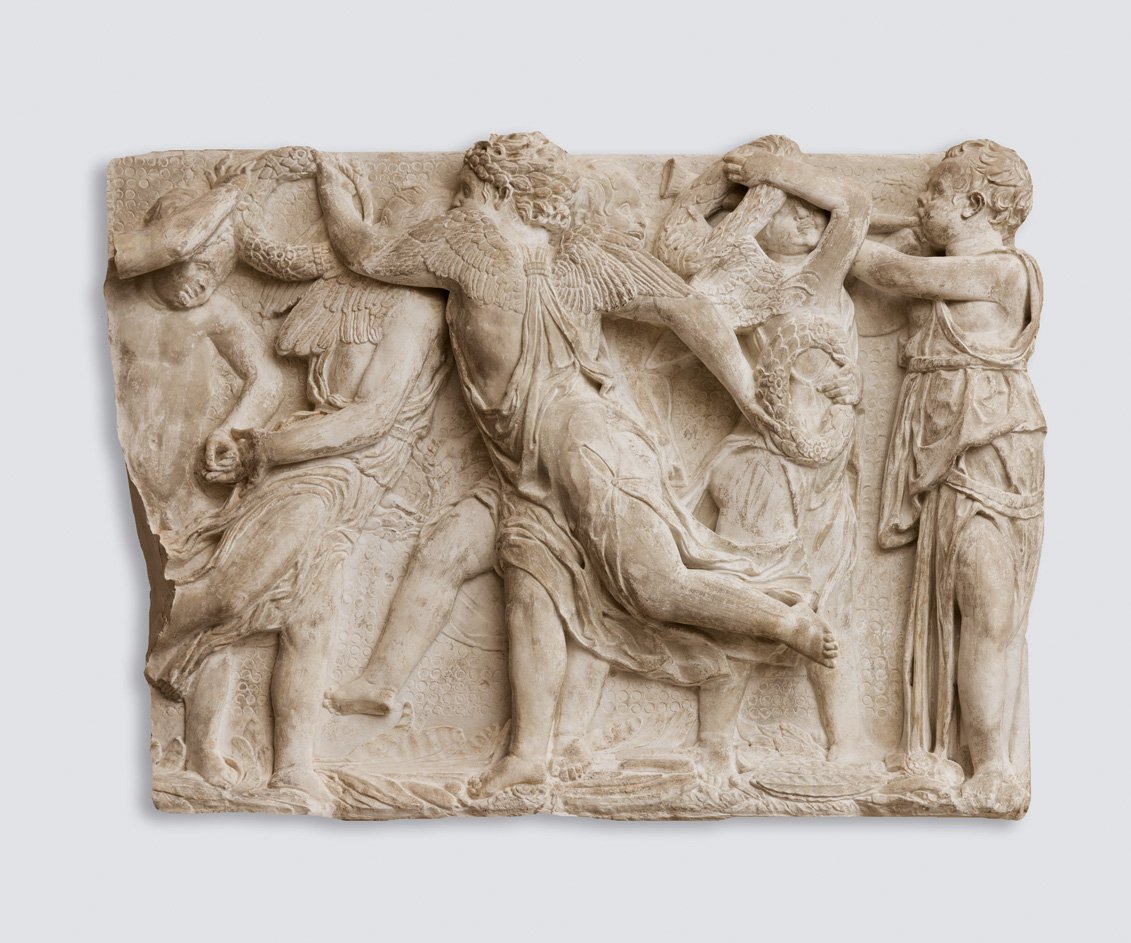Reliefs from the Singing Gallery
Donatello, Giuseppe Lelli (cast maker)- Artist
-
Donatello
Florence 1386/1387 – 1466 Florence
Giuseppe Lelli
(cast maker)
Firenze
- Dated
- 1433–1439 (original), 1907 (cast)
- Classification
- relief, plaster cast
- Medium
- plaster cast
- Dimensions
- 98 × 700 cm fragment: 98 × 130 × 15 cm fragment: 98 × 121 × 15 cm fragment: 95 × 116 × 16 cm fragment: 94 × 131 × 17 cm fragment: 94 × 118 × 21 cm
- Inv.no.
- Rg.165
- Department
- Sculptures - Plaster casts
- Current Location of the Original Artwork
- Italy, Florence, Museo dell'Opera del Duomo
The Singing Gallery (Italian: Cantoria) is one of Donatello’s best-known works. He carved the marble balcony for the Duomo in Florence between 1433 and 1439. Despite its name, the gallery was initially intended to house the cathedral’s old organ rather than as a place for singers. The new organ was placed in the gallery on the opposite wall, created by Luca della Robbia, another eminent Flortentine sculptor. Whereas a connection is often drawn between music-making and singing children and the verses of Psalm 150, there is no known reference point for Donatello’s dancing and singing angels. The plaster cast fails to reproduce the appearance of the original work, given that Donatello decorated the background with glass mosaics in order to give emphasis to the figures of angels. The Museum of Fine Arts ordered plaster casts of six reliefs from the balcony, thereby omitting the architectural frame.

